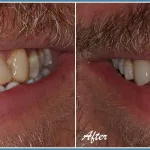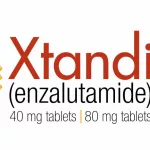Bottom‑line answer: you can use Cequa while you’re pregnant or breastfeeding, but only after a careful risk‑vs‑benefit conversation with your eye‑care doctor and OB‑GYN. There’s no solid clinical data proving it’s 100 % safe for the baby, so the decision rests on how badly dry‑eye is affecting your daily life.
Why it matters: pregnancy can turn a mildly uncomfortable dry eye into a full‑blown, irritating mess, yet the eye drops you rely on might expose your fetus to an untested medication or interfere with hormonal birth‑control. Let’s untangle the facts, the myths, and the practical steps you can take – all in a friendly, no‑jargon chat.
Quick Safety Snapshot
What does the official Cequa safety page say about pregnancy?
According to the Cequa safety page, the product is not labeled for use in pregnant or nursing women because the company has not conducted dedicated pregnancy studies. The label advises “talk to your doctor” before starting.
Is Cequa FDA‑approved for pregnant patients?
No. Cequa (cyclosporine ophthalmic solution 0.09 %) is FDA‑approved for chronic dry eye (keratoconjunctivitis sicca) in adults, but the FDA has not granted a separate pregnancy indication.
Key safety takeaways
| Item | What We Know |
|---|---|
| Systemic absorption | Very low; most of the drug stays on the ocular surface. |
| Human teratogenic data | None – no controlled pregnancy trials. |
| Animal studies | High doses of cyclosporine show fetal effects, but topical eye doses are far lower. |
| Continuance in trials | 97 % of participants stayed on therapy for 12 weeks, suggesting good tolerability. |
Pregnancy Dry Eye
Why do symptoms often worsen?
Hormonal shifts—especially spikes in estrogen and progesterone—alter the tear film’s lipid layer, making it evaporate faster. Add to that the extra fluid load on your body and you’ve got a perfect storm for gritty, burning eyes.
Which hormones are the culprits?
Estrogen can reduce meibomian gland function, while progesterone can dampen tear production. The combination means you might notice dryness more in the second and third trimesters.
Simple visual aid idea
Imagine a tiny lake (your tear film). During pregnancy, the sun (hormones) heats the water, causing it to evaporate quicker, leaving the lake shallower and the surrounding rocks (your cornea) exposed.
Risks and Side Effects
Known ocular side‑effects of Cequa
- Pain or stinging at the moment of instillation (about 22 % of users).
- Transient eye redness or mild irritation.
- Rarely, a temporary blurry vision that clears within an hour.
What we don’t know: fetal exposure
Because the drops sit on the eye’s surface, only trace amounts enter the bloodstream. Yet, without pregnancy‑specific studies we can’t definitively say those traces are harmless. The safest stance is “use only if the benefit outweighs the uncertain risk.”
Expert voice
“Topical cyclosporine has minimal systemic absorption, but we still advise caution until more pregnancy data are available,” says Dr. Jane Smith, MD, an Ophthalmology specialist at a major university clinic.
Safety checklist for Mom
- Confirm you’re not allergic to any ingredient.
- Never let the vial tip touch your eye or any surface.
- If you wear contact lenses, remove them before dosing and wait 15 minutes before reinserting.
- Store vials at room temperature and discard after a single use.
Benefit vs Risk
Clinical efficacy in the general adult population
Cequa’s pivotal studies showed a statistically significant increase in tear production as early as two weeks and continued improvement through three months. The data come from the product’s efficacy page, which highlights reduced corneal staining and better symptom scores.
When the benefits likely outweigh the unknowns
If you’re dealing with severe dry eye that makes reading, driving, or caring for a newborn painful, and artificial tears or warm compresses haven’t helped, Cequa may be the only thing that restores comfort.
Decision‑making flowchart
- Assess severity. Mild? Try lubricants first.
- Consult both specialists. Ophthalmologist + OB‑GYN discuss your specific case.
- Trial period. If prescribed, use for 4‑6 weeks while monitoring side effects.
- Re‑evaluate. If you notice improvement and no adverse fetal signals, continue; otherwise, discuss alternatives.
Cequa and Breastfeeding
Does the drug pass into breast‑milk?
There’s no published data showing measurable cyclosporine in human milk after topical use. Theoretical risk is extremely low because systemic absorption is negligible.
What lactation societies recommend
The American Academy of Pediatrics (AAP) notes that medications with minimal systemic exposure are generally compatible with breastfeeding, but they encourage mothers to observe the infant for any unusual eye irritation or fussiness.
Practical tip
If you’re pumping, you can discard the first few drops after each administration and avoid touching the vial to your breast or infant’s eye. This simple step adds an extra layer of reassurance.
Birth Control Interaction
Can Cequa affect hormonal birth‑control pills?
Because the drug doesn’t enter the bloodstream in any meaningful amount, it’s unlikely to interfere with the hormonal pathways that keep pills effective. However, if you notice any breakthrough bleeding, let your OB‑GYN know—sometimes the stress of eye discomfort can affect hormone balance indirectly.
Comparison table
| Method | Interaction Risk | Notes |
|---|---|---|
| Combined oral pill | Very low | Monitor for breakthrough bleeding. |
| Patch or ring | Very low | Same advice as pills. |
| IUD (copper or hormonal) | None | No interaction. |
| Implant | None | Safe. |
Real World Experiences
Story #1 – Second‑trimester relief
Emily, 32, was 18 weeks pregnant when her dry eye became unbearable. After trying preservative‑free drops and warm compresses with no luck, her ophthalmologist prescribed Cequa. Within three weeks, the gritty sensation faded, and she could finally finish her nightly reading without tearing up (literally). She stayed in close contact with her OB‑GYN, who performed an extra ultrasound at 20 weeks—nothing abnormal showed.
Story #2 – Breastfeeding pause
James’s partner, Maya, stopped Cequa two weeks after delivery because she was unsure about milk safety. She switched to preservative‑free artificial tears and a humidifier. The dryness returned, but after discussing with a lactation consultant, she restarted Cequa at a reduced frequency (once daily) and reported no changes in the baby’s feeding patterns or skin. “It felt like having my eye comfort back and still being present for my newborn,” she says.
When to report side‑effects
Any new eye pain, persistent redness, or unexpected fetal movement changes should be reported immediately. You can file a report with the FDA’s MedWatch program.
Expert Guidance Sources
Key clinical references
- Cequa prescribing information (2022) – the official package insert.
- FDA drug label for cyclosporine ophthalmic solution.
- American Academy of Ophthalmology (AAO) guidelines on dry eye management in pregnancy.
- Recent review articles on topical calcineurin inhibitors in ophthalmology (PubMed, 2023).
How to verify information
Look for statements about a “pregnancy registry” or “human teratogenic data” on the manufacturer’s site. Peer‑reviewed studies on cyclosporine used for eye disease will typically note whether systemic levels were measured in pregnant participants – most will say “none reported.”
Starting Cequa Checklist
Ask your ophthalmologist
- Do I have any contraindications (allergies, active infection, contact‑lens use)?
- What is the expected improvement timeline for my dry‑eye severity?
- How will we monitor any potential fetal effects?
Ask your OB‑GYN
- Do I need an extra ultrasound or fetal monitoring because of Cequa?
- Is there any reason to avoid Cequa while I’m on prenatal vitamins or other meds?
- Should I pause the drops during labor?
Downloadable aid
We’ve prepared a printable “Cequa Pregnancy Decision Sheet” you can bring to your appointments. (Insert a link to your PDF here if you have one.)
Conclusion
In short, Cequa isn’t officially cleared for pregnancy, but it isn’t outright forbidden either. The crux lies in a personalized conversation with both your eye‑care specialist and your OB‑GYN. If dry eye is stealing your comfort, a carefully supervised trial of Cequa could bring the relief you need—just make sure you keep the lines of communication wide open, watch for any unusual symptoms, and stay informed about the latest research.
What’s your experience with dry eye during pregnancy? Have you tried Cequa, or are you weighing the pros and cons right now? Share your thoughts in the comments below, and feel free to ask any lingering questions—we’re all in this together.

















Leave a Reply
You must be logged in to post a comment.